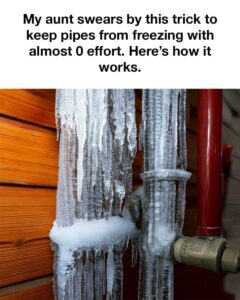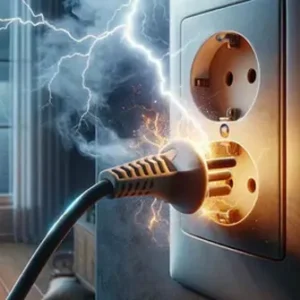
As winter approaches, homeowners face the perennial challenge of keeping their pipes from freezing. When temperatures drop, the water inside pipes can freeze, expand, and cause the pipes to burst. This not only leads to costly repairs but also disrupts daily life. Many people resort to complex solutions or expensive heating systems, but my aunt has discovered a remarkably simple trick that requires almost no effort.
Understanding the Risks and Costs of Frozen Pipes
Frozen pipes are more than just an inconvenience; they pose significant risks to your home. When water freezes, it expands, exerting pressure on the pipes. This can lead to cracks or bursts, resulting in water damage, mold growth, and expensive repair bills. In severe cases, it can also cause structural damage to your home. According to insurance data, the average cost to repair water damage from burst pipes can range from $5,000 to $70,000, depending on the extent of the damage.
The Simple Trick My Aunt Swears By
My aunt’s trick is surprisingly straightforward: she uses a combination of pipe insulation and a small space heater. By wrapping pipes with foam insulation and placing a low-wattage space heater nearby, she ensures that the pipes remain above freezing temperatures. This method is cost-effective, easy to implement, and requires minimal maintenance.
How the Trick Works to Prevent Freezing
The foam insulation acts as a barrier, reducing heat loss from the pipes. It helps maintain the water temperature inside the pipes, even when the surrounding air is cold. The space heater provides a gentle, consistent heat source that keeps the ambient temperature around the pipes above freezing. This dual approach effectively prevents the water inside the pipes from freezing, even during the coldest nights.
Step-by-Step Guide to Implementing the Trick
1. Purchase foam pipe insulation from a hardware store.
2. Measure the length of the pipes you need to insulate and cut the foam insulation to fit.
3. Wrap the insulation around the pipes, securing it with duct tape if necessary.
4. Place a low-wattage space heater near the pipes, ensuring it is positioned safely and away from flammable materials.
5. Set the heater to a low setting and plug it into a timer to run during the coldest parts of the day or night.
Additional Tips for Keeping Pipes Warm
In addition to my aunt’s trick, consider leaving cabinet doors open under sinks to allow warm air to circulate around pipes. Letting faucets drip slightly can also prevent pressure buildup and freezing. Seal any cracks or openings in walls near pipes to reduce cold air infiltration. If you have outdoor pipes, disconnect hoses and cover the faucets with insulated covers.
Common Mistakes to Avoid
Avoid using high-wattage heaters that can pose a fire risk. Ensure the space heater is placed on a stable surface and away from water sources. Do not leave the heater running unattended for long periods. Make sure the foam insulation is properly secured and covers the entire length of the pipe without gaps.
Frequently Asked Questions
Q: Can I use this method for outdoor pipes? A: It’s best suited for indoor pipes, but you can use insulated covers for outdoor faucets. Q: Is it safe to leave the heater on overnight? A: Yes, if you use a low-wattage heater with safety features and a timer. Q: How much does this method cost? A: Foam insulation costs around $1 per foot, and a small space heater can be purchased for $20-$30.
Conclusion: Effortless Pipe Protection
With my aunt’s simple trick, you can protect your pipes from freezing with minimal effort and expense. By combining foam insulation with a low-wattage space heater, you create a reliable defense against the harshest winter conditions. This method is easy to implement, cost-effective, and provides peace of mind throughout the cold season. Say goodbye to the stress of frozen pipes and enjoy a worry-free winter.



